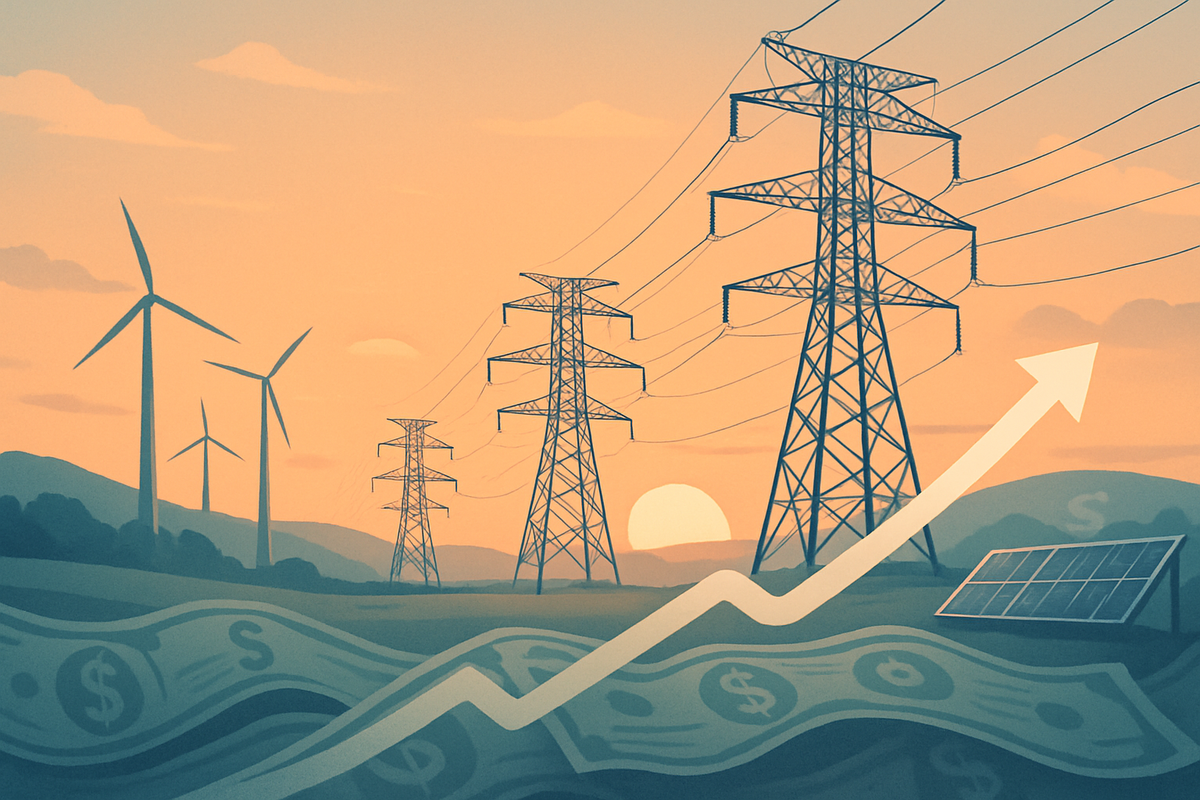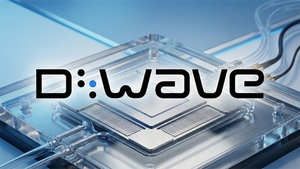
ST. LOUIS, MO – October 10, 2025 – Ameren Corporation (NYSE: AEE), a prominent electric and natural gas utility, recently solidified its reputation as a reliable income provider by declaring a quarterly cash dividend of 71 cents per share on its common stock. This declaration, made on August 15, 2025, with an ex-dividend date of September 9, 2025, and paid on September 30, 2025, underscores the inherent stability and consistent return potential often found within the utility sector. For investors navigating a dynamic market, Ameren's commitment to shareholder returns offers a reassuring beacon of predictability.
The consistent payout from Ameren highlights the utility sector's enduring appeal, particularly for income-focused portfolios. In an environment where market volatility can sway investor confidence, the predictable cash flow generated by regulated utilities like Ameren provides a defensive hedge. This latest dividend, contributing to an annualized payout of $2.84 per share, translates to an approximate yield of 2.7-2.8% based on recent stock prices, making it an attractive proposition for those seeking steady income streams.
A Deep Dive into Ameren's Dividend Declaration
Ameren's declaration of a 71-cent quarterly dividend is more than just a routine announcement; it's a testament to the company's robust financial health and a strategic commitment to its shareholders. The dividend, payable to shareholders of record as of September 9, 2025, has already been distributed on September 30, 2025. This timely payout mechanism ensures that investors receive their returns efficiently, reinforcing trust in the company's financial management.
Utility companies, by their very nature, operate in a regulated environment, providing essential services such as electricity and natural gas across a wide service area. This regulatory framework often translates into stable and predictable revenue streams, distinguishing them from more cyclical industries. Ameren's long-standing history of consistent dividend increases—now spanning 11 to 12 consecutive years—demonstrates not only financial prudence but also a clear strategy to return value to its investors. This track record is a critical factor for investors who prioritize long-term, compounding returns.
The company's moderate payout ratio, reportedly in the 59-61% range, further underscores its financial discipline. A healthy payout ratio indicates that Ameren is distributing a significant portion of its earnings to shareholders while retaining sufficient capital for essential infrastructure investments, operational enhancements, and future growth initiatives. This balance is crucial for sustainable dividend growth and ensures the company's ability to maintain its service quality and expand its reach, ultimately benefiting both customers and shareholders. The consistent dividend acts as a strong signal of management's confidence in future earnings and operational stability.
Market Implications and Company Performance
Ameren's consistent dividend policy plays a pivotal role in shaping its stock price stability and investor perception. As a defensive investment, the demand for Ameren's essential services remains relatively stable irrespective of broader economic conditions, leading to predictable earnings that underpin its reliable dividend payments. This inherent stability helps to reduce stock price volatility, making Ameren an attractive option for risk-averse investors. While a stock's price typically dips on its ex-dividend date, Ameren has historically shown a robust recovery pattern, often normalizing within a few days, signaling strong underlying market confidence.
This consistent return of capital significantly enhances investor perception, portraying Ameren as a financially healthy and confident entity. The regular and increasing payouts signal that the company generates sufficient profits to reward shareholders while simultaneously investing in its future. This makes Ameren particularly appealing to income-focused investors, such as retirees, who prioritize a steady cash flow. Furthermore, its track record of dividend growth, currently standing at 12 consecutive years of increases, positions it favorably for long-term and dividend growth investors seeking compounding returns. Institutional investors, holding a significant portion of Ameren's stock, further validate its credibility and dividend strategy.
Comparing Ameren to other utility companies, its dividend yield (around 2.7-2.8%) is consistent with the sector average. Its payout ratio of approximately 60% is sustainable, allowing for crucial reinvestment in infrastructure modernization and the clean energy transition. However, the market's current valuation of the utility sector suggests a dual focus beyond just income; investors are increasingly scrutinizing growth potential. Ameren's substantial $32 billion capital expenditure plan and a 2.3 GW data center pipeline are key drivers supporting its 6-8% EPS compound annual growth rate and its ability to maintain its dividend yield, indicating that future market performance will also be tied to the execution of these growth initiatives.
Broader Significance for the Utility Sector
The consistent declaration of dividends by utilities like Ameren holds a broader significance for the entire financial market and the utility sector itself. Utilities provide essential services, ensuring a stable business model with predictable revenues, making them a cornerstone for income-focused and conservative investors. This stability is particularly valued during market volatility, offering a defensive play and a potential hedge against inflation with slowly growing dividends.
This consistency is intrinsically linked to major industry trends, notably the clean energy transition and massive infrastructure investment. Utilities are at the forefront of shifting towards renewable energy sources and modernizing grids. Companies like American Electric Power (NASDAQ: AEP) and Duke Energy (NYSE: DUK) are planning tens of billions in capital investments over the next decade. The ability of utilities to fund these substantial projects while simultaneously paying consistent dividends highlights their strong financial footing, often facilitated by predictable returns on approved investments through regulated rate bases. This symbiotic relationship ensures that critical infrastructure development can proceed, supported by investor capital attracted by reliable dividends.
While direct competition between utilities is limited due to their regulated monopoly status, the strong performance and consistent dividends from leading players like Ameren, NextEra Energy (NYSE: NEE), and Southern Company (NYSE: SO) set a benchmark for the sector. This can enhance overall investor confidence in the utility space, potentially lowering the cost of capital for other utilities and encouraging a focus on core regulated businesses. The regulatory environment is crucial, as public utility commissions oversee rates and approve investments, directly impacting a utility's ability to grow earnings and sustain dividends. While regulators generally allow returns on approved investments to incentivize development, there's ongoing scrutiny to balance shareholder returns with consumer affordability and critical infrastructure needs, especially in light of past events like the PG&E (OTCPK:PCGQF) bankruptcy.
Historically, the utility sector has earned its reputation for stability, often referred to as "widow and orphan" stocks due to consistent demand for essential services regardless of economic cycles. Many utilities boast decades of uninterrupted or increasing dividend payments, with some like American Electric Power (NYSE: AEP) maintaining quarterly dividends since 1910. This long-standing stability and often bond-like characteristics have cemented the utility sector's role as a defensive haven that frequently outperforms during market downturns, as seen in 2022.
What Comes Next for Ameren and the Utility Market
The future outlook for Ameren and the broader utility sector is characterized by dynamic shifts driven by the energy transition, evolving regulatory landscapes, and fluctuating interest rates. Ameren's consistent dividend declarations position it to navigate these changes through strategic infrastructure investments and a cleaner energy mix.
In the short term (1-3 years), the utility sector is set to benefit from an unprecedented surge in electricity demand, fueled by electrification, the expansion of AI-driven data centers, and industrial reshoring. This presents a significant tailwind for companies like Ameren, necessitating substantial investments in grid infrastructure and generation capacity. Ameren Missouri, for instance, anticipates a 40% increase in industrial sales due to a new data center. Utilities will continue to pour capital into modernizing aging infrastructure and integrating new technologies like smart grids, while also navigating dynamic regulatory changes from federal agencies like FERC and EPA regarding transmission and carbon emissions. Interest rate sensitivity remains a factor, as utilities are capital-intensive, though the market may be increasingly pricing in growth.
Looking long-term (3+ years), the acceleration towards a low-carbon economy will see utilities playing a central role in deep decarbonization. This involves the continued retirement of coal plants, massive expansion of renewable energy, and extensive integration of battery storage. Ameren's net-zero by 2050 goal and significant renewable investment plans align directly with this trend. The grid will become more complex and decentralized, requiring advanced management technologies and new business models, potentially pivoting from commodity providers to integrated energy solutions. Customer expectations for transparency and personalized services will also drive further digital transformation.
Ameren is strategically pivoting by diversifying its generation portfolio, including natural gas as a reliable backup for renewables, and aggressively modernizing its grid to handle increasing demand and enhance resilience. Its focus on regulated investments aims to secure stable, inflation-protected returns crucial for funding its ambitious clean energy and infrastructure projects. Market opportunities include explosive demand growth, the declining cost of renewables, and new revenue streams from EV charging and energy management services. However, challenges persist, including regulatory uncertainty, high capital expenditures and cost recovery concerns, the intermittency of renewables, aging infrastructure, and escalating cybersecurity risks.
For investors, several scenarios emerge. A base case suggests steady income and moderate growth, with Ameren's consistent dividends and capital plan delivering 6-8% earnings growth through 2029, assuming successful navigation of regulatory hurdles. An optimistic scenario could see accelerated growth if demand exceeds expectations and regulatory support is robust, potentially re-rating utilities as growth stocks. Conversely, a challenging scenario might involve sustained interest rate headwinds and regulatory friction, impacting borrowing costs and hindering investment returns. Finally, execution risk remains, where project delays or unforeseen disruptions could affect financial performance.
A Reliable Anchor in Shifting Tides
Ameren's recent declaration of a 71-cent quarterly dividend serves as a powerful reaffirmation of the utility sector's enduring appeal as a source of stability and reliable income for investors. The company's consistent payout history, coupled with its strategic focus on infrastructure modernization and the clean energy transition, positions it as a resilient player in an evolving market. This steadfast approach, characterized by a healthy payout ratio and a commitment to long-term dividend growth, underscores the sector's ability to generate robust cash flows even amidst substantial capital expenditure requirements.
Moving forward, the utility market stands at a pivotal juncture, poised for significant transformation driven by unprecedented surges in electricity demand from AI, data centers, and widespread electrification. This "once-in-a-generation opportunity" could fundamentally reshape the sector's growth trajectory, moving it from a traditionally slow-growth industry to one with considerable expansion potential. However, this growth is contingent on massive capital investments, effective navigation of complex regulatory landscapes, and the ability to manage interest rate sensitivities.
The lasting impact of this period will be defined by how utilities adapt to these forces. Ameren, through its balanced generation strategy, aggressive grid modernization, and disciplined regulated investments, is actively shaping its future. Investors should continue to monitor key indicators such as interest rate movements, regulatory decisions on rate cases and environmental mandates, and the pace of capital expenditure announcements across the sector. Particular attention should be paid to companies demonstrating strong connections to high-demand growth areas like AI and data centers. By carefully assessing these factors, investors can make more informed decisions regarding their utility holdings in what promises to be a dynamic and increasingly electrified market.
This content is intended for informational purposes only and is not financial advice




